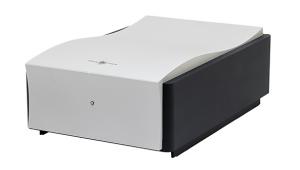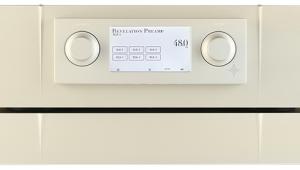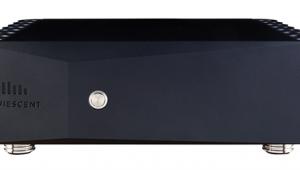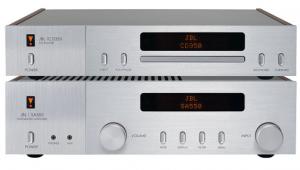Icon Audio Mb90 Mkiim 150 (£2900 Pair)
![]()
Like the hardy perennials of audio horticulture, the standard valve amplifier circuits keep coming up fresh year after every year. And there’s been a new flowering in the family of beam tetrode tubes that started with the venerable KT66. This is the new Tung-Sol KT150, and the first manufacturer to feature it is Icon Audio, showing this tube off to good advantage in its MB90 MkIIm monoblock power amp.
Built in Icon’s factory in China but finished and tested in Leicester, the MB90 MkIIm looks solid and handsomely-proportioned. The tubes spring proudly from a chunky 6mm-thick copper-coloured plinth (in fact it’s anodised aluminium).
On the right is the small 6SL7 double-triode for the first stage of amplification, while the 6SN7 on the left is the phase-splitter, creating the two ‘halves’ of the audio signal to be fed to the two KT150s in the push-pull output stage. In the middle, adding its own pale blue glow, is a 0D3 ionising voltage regulator. Underneath the chassis, as with all Icon products, the circuitry is built up by traditional point-to-point wiring.
The fascia has a Triode/Ultralinear switch and while running the valves as triodes may be expected to produce the best sound quality, the claimed power output necessarily reduces from 115W to just 60W.
Suitably retro in design, the illuminated analogue meter is primarily an output power meter, marked with a scale of 0-100 – in practice, you’ll hardly see it move. But it does make it easy to check the bias on the output tubes, via a three-position toggle switch. On the back of the amp is a single unbalanced (phono) input socket and set of three speaker terminals, providing 4/8ohm matching options. There’s also a choice of High or Low sensitivity.
‘Low’ is designed to work with normal valve and solid-state preamps and gives the best damping factor for difficult speaker loads. ‘High’ is more suitable for use with passive preamps or other source devices with a volume control. But, says Icon, ‘purists may prefer this low feedback sound.’
Varying the sound
Comparing Triode and Ultralinear settings we found that the triode mode was often just more atmospheric-sounding, and ultralinear was generally just not quite so sweet. With Marta Gomez and Entre Cada Palabra [Chesky] the vocals appeared more focused, whereas with the ultralinear the singer appeared almost to be splashed across the stage. In triode mode, the bass seemed not so deep and at the same time perhaps less well-controlled, but somehow with a coherent connection to the upper registers that made it satisfying.
We preferred the ‘low feedback sound’ of the High sensitivity option. Set to Low, there was still depth in the soundstage, but it lost some of the sense of freedom and perspective.
On the ‘Maria Mulata’ track, for example, you really got more of the quick slapping and cracking sounds of the various percussion instruments. Conversely, the Low position was fine on the voice and agreeably smoother on the bright, sharp solo flute sound.
It seemed that the Icon pair could always give the music a lively bounce. With Kings Of Leon and Come Around Sundown [Sony] the Icons gave you the power of the drums and bass (even though the bass weight was moderate), and revelled in the over-the-top guitar sounds. With Patricia Barber’s The Cole Porter Mix [Blue Note], voice, piano and guitar each had a glossy perfection of their own. On ‘Snow’, the timbral correctness and fine yet unexaggerated detail of the vocal made for a gripping experience.
Verdict
With ample power for most systems and user-friendly operation, there’s a great sound that’s tremendously inviting, and smooth as silk.
Originally published in the 2014 Yearbook























































